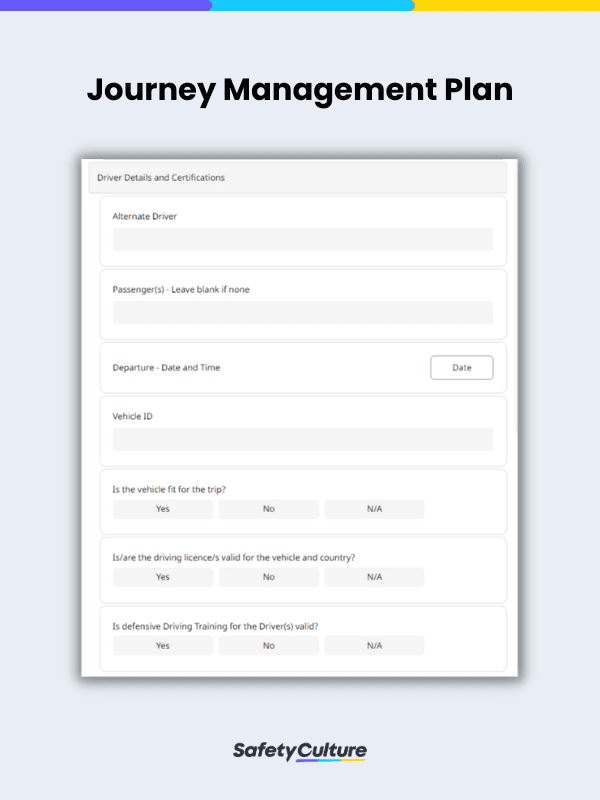What is a Journey Management Plan?
A journey management plan is a set of trip-specific instructions and guidelines designed to help employees complete official company trips safely and efficiently. As a general rule, road journeys that are expected to last more than 4 hours should have a journey management plan.
Pre-journey Preparations
Before putting in work to create a journey management plan, officers-in-charge must first ensure that a road journey is absolutely necessary. According to the CDC, motor vehicle accidents are the leading cause of workplace deaths, adding incentive to avoid them as much as possible. If driving is the sole option, pre-journey preparations should include the following:
- checking for the safest route to take; considering terrain and weather forecasts;
- scheduling drives to avoid night travel since drivers are more susceptible to fatigue and sleepiness at night;
- including sufficient rest breaks in the travel itinerary;
- a check-in process to ensure that the employee/driver can provide updates regarding their safety status and progress;
- ensuring that the vehicle the employee/driver is using is in good condition and is appropriate for the nature of the trip by doing a pre-trip inspection;
- ensuring that the employee is physically fit enough to undertake the trip; and
- ensuring that the employee has the knowledge, skills, and adequate training to complete the trip safely.
Top 5 Reasons Your Company Needs to Follow Journey Management Plans
Though employees and drivers can complete company-sanctioned trips without a formal journey management plan, the safety and efficiency of journeys are greatly improved simply by following one. Below are the top five reasons your company needs to start journey management planning:
Trips become safer and more efficient
The risk of accidents and delays are greatly reduced by doing research on the best possible routes prior to the journey. Part of the pre-trip planning is looking for routes with minimal traffic, effectively lowering the risk of collisions in addition to making the trip faster. This becomes even more important if the employee has to make multiple stops in the course of the journey.
Schedule adherence becomes easier
Most, if not all company-sanctioned trips follow a schedule. By establishing the safest and most efficient routes to take prior to the journey, it becomes easier for employees to arrive safely and on time to set appointments.
Naturally comply with motor vehicle laws and regulations
An essential step in journey management planning involves thorough pre-trip inspections. These vehicle inspections ensure that the employee is using the appropriate vehicle for the trip, that the vehicle is in good condition, and that it adheres to federal laws for motor vehicle safety standards.
Prepare your drivers for accidents and emergencies
A good journey management plan also provides guidance to employees in case of road emergencies and accidents. Aside from providing general safety guidelines on what to do if their vehicle breaks down, journey management plans can include company-specific processes and information such as a list of contact persons an employee can reach out to if necessary.
Standardize company driving processes and improve accountability
By creating an official journey management plan, you effectively standardize the process for company-sanctioned trips. Having a plan that includes instructions, guidelines, and other helpful information can help improve employee accountability both from the driver’s end and the personnel he or she is supposed to check in with.



